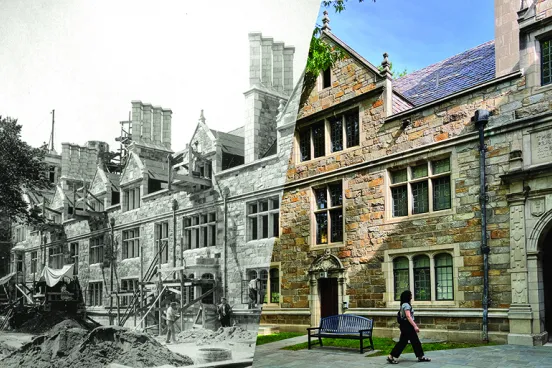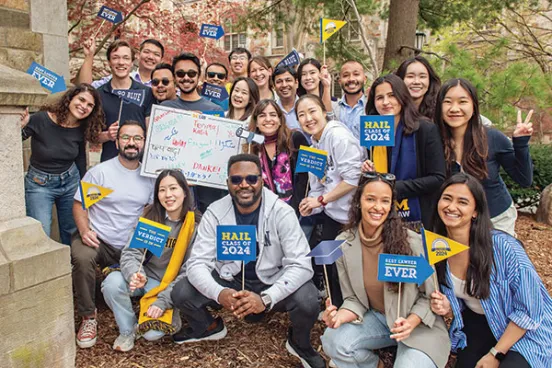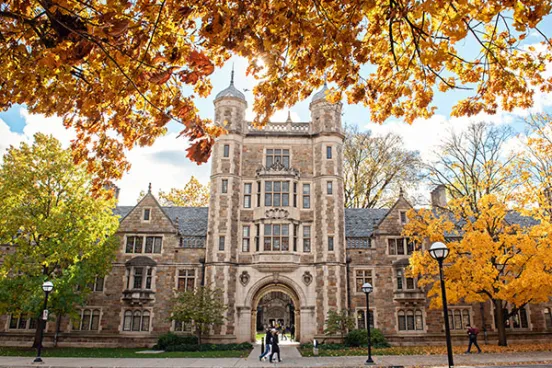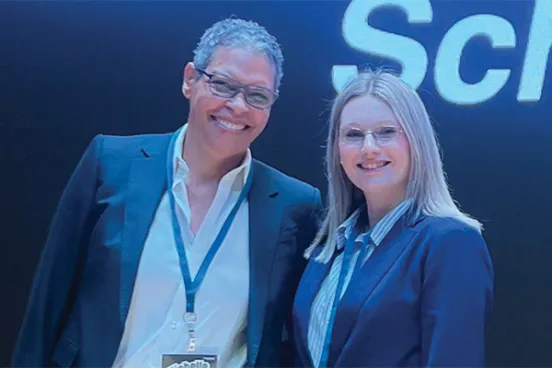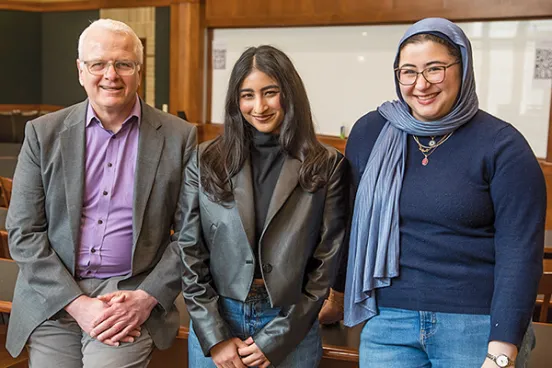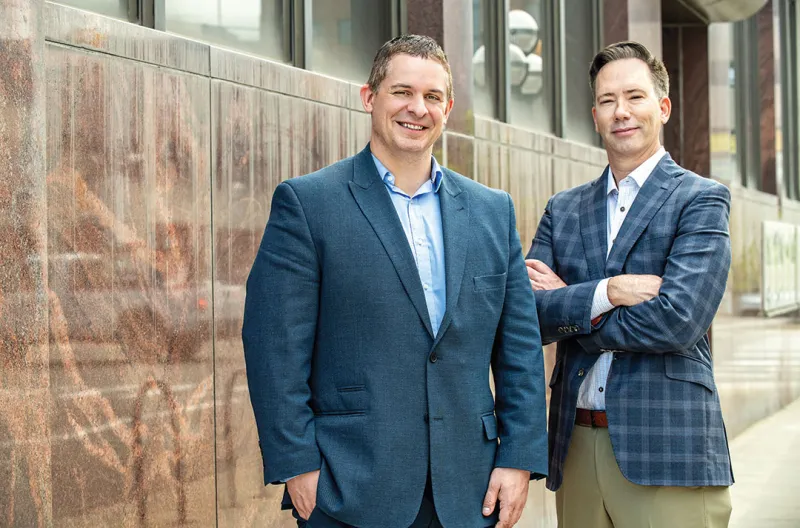
When Eli Savit, ’10, was growing up in Ann Arbor, he would sometimes engage in typical youthful indiscretions—some of which, admittedly, were against the law. Even if he got caught, however, he didn’t suffer lasting consequences, and today he knows his race likely played a part in those outcomes.
J.J. Prescott, the Henry King Ransom Professor of Law, has long been interested in issues of prosecutorial decision-making, particularly in relation to race. But in studying these issues, he’s been frustrated by a lack of hard data that would allow him and other researchers a clear picture of the problem.
In 2020, Savit decided to run for the office of prosecutor for Washtenaw County (which includes Ann Arbor), and fair treatment for defendants regardless of race became a core theme of his campaign. After winning the election, he set out to make good on that promise—and teaming up with Prescott was a natural first step.
In partnership with U-M Poverty Solutions and the American Civil Liberties Union of Michigan, Prescott and Savit developed the Prosecutor Transparency Project to look for racial disparities in charging and other decisions in the Washtenaw County Prosecutor’s Office. The groundbreaking project released its first results in spring 2024—and the sponsors hope it will serve as a model for similar efforts elsewhere.
Eli Savit, ’10, Washtenaw County ProsecutorMore than anything, I don’t want our office to be putting our heads in the sand about potentially differential treatment, and I don’t want to be exacerbating it.
The issue
“Everybody knows that there are racial disparities in the criminal legal system,” Savit says. “It’s important for us as public servants to take a look in the mirror to examine whether any of our decisions are creating or exacerbating those disparities, and really to drill down into whether people are being treated differently because of race.”
Savit’s campaign for office offered a specific example: He would recount a time growing up when he was part of a group whom the police caught underage drinking in a park. The police told the youths to pour out their beer, and that was that. If he hadn’t been white, Savit wondered, would the outcome have been different?
One time when Savit told this story, the person facilitating the conversation—a Black woman close to his age—answered the question: In fact, she had been part of a similar experience as a youth, but she ended up facing charges in the juvenile justice system.
“More than anything, I don’t want our office to be putting our heads in the sand about potentially differential treatment, and I don’t want to be exacerbating it,” Savit says. “We have a responsibility to give everybody the benefit of the doubt that I got.”
Making that happen, though, requires data.
“Improving how prosecutors make decisions will be much easier to achieve if we know the source and extent of the most pressing problems,” Prescott says. A handful of previous studies around the country have looked at racial disparities in prosecution, but for the most part they haven’t studied the entire history of all cases in a jurisdiction. The need for a deeper dive was clear.
The study
Prescott’s study—conducted jointly with Law School research scholar Grady Bridges—examined prosecutorial decision-making in nearly 35,000 cases in Washtenaw County from 2017 to 2022, at four specific stages:
- Authorizing prosecution and selecting charges
- Designating a defendant as a habitual offender
- Plea bargaining
- Diversion and deferral opportunities
Although the study focused specifically on decisions made in the prosecutor’s office, it did note that the largest racial disparities arise even earlier in the process—when law enforcement agencies make an arrest and request that the prosecutor authorize charges. In fact, the data showed that the number of charging requests for people of color were 1.75 times higher than would be expected from their share of the total county population. For Black people specifically, the number was more than four times higher.
Once those charging requests were made, some racial disparities remained, but they were much smaller. Specifically, the study found evidence that, on average, people of color:
- Faced a somewhat higher likelihood (less than 1 percent) of being charged with any crime.
- Faced 3 percent more total charges when charged.
- Faced charges with 6 percent longer maximum sentences when charged.
On the other hand, the data showed that people of color, after controlling for other differences between the defendants and their cases, were less likely than white people to be designated as habitual offenders.
“The results of the study indicated that there were small disparities—in a statistically insignificant to marginally statistically significant range—arising from our office,” Savit says. “I’m heartened by the small size of the disparities, and I think it’s a reflection of the work that our prosecutors do. It’s important to note that disparities don’t necessarily equal disparate treatment or bias. It could just be due to a few cases that presented more extreme facts.”
Prescott explains that the study was not able to address disparities in plea bargaining—potentially a major area of concern—because the nature of the process makes collecting useful data on choices and outcomes difficult and because Washtenaw County, like many counties, had poor data on its plea-bargaining practices.
“Prosecutors and defense attorneys bargain in lots of ways, mostly to make the process easier and faster. They email, they talk on the phone, they meet in person—as a result, it’s very opaque how that happens,” Prescott says. “That is a major lesson of this study: that no matter what kinds of policies you put in place, if plea bargaining is happening in many different and informal ways, then it’s going to be hard to know whether or not it’s a significant source of disparities.”
J.J. Prescott, the Henry King Ransom Professor of LawThe hope is that this report will be an inspiration and that, someday soon, it’ll be bad form not to do this kind of self-study regularly. The assumption is that if people can monitor prosecutorial choices through easy-to-understand statistics, prosecutors will have a strong incentive to make sure their policies and decision-making work fairly and well for everyone in the community.
The next steps
Eve Primus, ’01—who serves as director of the Law School’s MDefenders program and of its Public Defender Training Institute—was not involved in the study, but as a defense expert, she sees it as important.
"This is a wonderful step toward greater transparency in and accountability for prosecutorial decision-making,” says Primus, the Yale Kamisar Collegiate Professor of Law. “This report shows some troubling racial disparities in how police approach charging and in some aspects of prosecutorial decision-making in Washtenaw County. It also shows that there are large, important areas of the criminal legal system—like the plea bargaining process—where insufficient data exists to determine if there are discriminatory practices."
The researchers agree that the disparities the study revealed warrant further examination. Savit also plans to create a public online dashboard, currently being developed, to track this sort of data and make it easily accessible to the public. Eventually, he would like to see a “data warehouse” that tracks criminal cases through the entire justice system.
Both Savit and Prescott hope their work in Washtenaw County can serve as a model in Michigan and beyond; in fact, they’ve already had inquiries from several other counties about the project.
“The hope is that this report will be an inspiration and that, someday soon, it’ll be bad form not to do this kind of self-study regularly,” Prescott says. “The assumption is that if people can monitor prosecutorial choices through easy-to-understand statistics, prosecutors will have a strong incentive to make sure their policies and decision-making work fairly and well for everyone in the community.”
Finally, longer-term efforts will need to address systemic reasons for racial disparities in the criminal justice system.
“It goes far beyond decision-making by actors in the criminal justice system,” Prescott says. “Racial disparities in our courtrooms and prisons are a function of employment opportunities, of educational opportunities, of residential segregation, of all sorts of challenging problems. I do think that we can solve those problems, but we can’t end disparities in the criminal justice system simply by better regulating prosecutors’ offices and the police.”
Savit concludes, “All of this is complex, and I think that’s the value of these data projects. We know disparities exist, and through projects like this, we can at least start to pinpoint where those disparities arise. We all should strive to treat people fairly, and the first step in ensuring that we’re fulfilling that ethical duty is to take a look at the data.”


